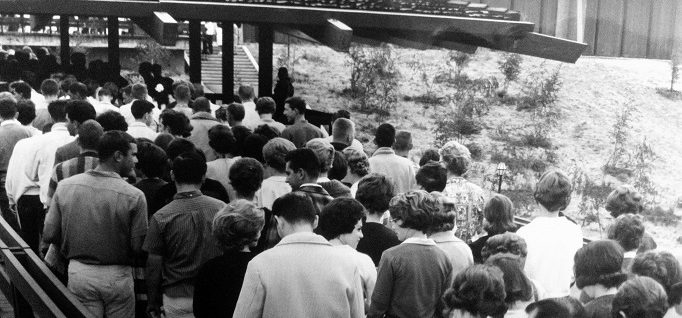A look back: From mainframes to multiple devices
By Ed Finkel
September 24, 2019
Community colleges harness changing technology to boost student access and success.
Shortly after the advent of the World Wide Web, the Foothill-De Anza Community College District, based in Los Altos Hills, California, began using online interactive admission and registration, in the summer of 1996. Mandatory student orientation sessions introduced this system to students, and two-thirds of all new students were registering on the Internet by then, according to an article in the October/November 1996 edition of Community College Journal.
Facing state legislation that required California community colleges to provide all matriculating students with an Individualized Education Plan (IEP), Foothill-De Anza streamlined the creation and updating of IEPs and other student records by partnering with Hershey Business Systems to develop the Student Success Network (SSN), which captured integrated student data and document imaging capabilities all in one place.
The SSN included online IEPs, an Electronic Student Portfolio that enabled counselors to identify and track students considered “at risk,” and a Counselor Web Portal that provided Internet-based counseling and advising. The system, which was still in development when the 1996 article published, also included a faculty portal that allowed for electronic submissions of reports on students and a communication loop among faculty, counselors and other service providers.
“We believe that this project provides us the opportunity to move away from a ‘one size fits all’ approach to responding to the needs of our ‘at risk’ students,” wrote Robert Griffin, then director of student services at De Anza College, based in Cupertino. “We are committed to removing as many barriers as possible that impede our students from reaching their educational goals. We understand that technology alone is not a solution, but rather a tool.”
Foothill-De Anza has continued to evolve its tools, says Joe Moreau, vice chancellor for technology. On the state level, the district was chosen as the lead agency for the California Virtual Campus Online Education Initiative, an initiative proposed by former Governor Jerry Brown to help all 114 community colleges in the state upgrade their online academic programs and provide more comprehensive services to students.
“The idea the governor had was to say, ‘Look, we can do this better together than 114 individual initiatives. I’d like you to come together and create an ecosystem that’s statewide and will help all colleges have access to the highest quality resources,’” Moreau says. The resulting product includes online tutoring and counseling, a course design rubric for faculty new to online teaching, and an online readiness program for students still more accustomed to classroom instruction.
The system has recently added cross-enrollment components to ease credit transfer and help students find the right courses at different campuses. Next up will be the ability to transfer students’ data to other campuses where they might be taking courses, up to and including making other colleges aware of financial aid and fee waivers in place on their home campus. “It’s really tricky,” Moreau says. “But we’re right on the verge of rolling that out, and it’s going to be a tremendous boon to students.”
The California Community Colleges Chancellor’s Office also has contributed to the rollout of online career education offerings with $27.5 million in grants. As the fiscal agent for the California Virtual Campus – Online Education Initiative, Foothill-De Anza is administering these grants.
This is an excerpt from the October/November Community College Journal, which will hit mailboxes in October.



